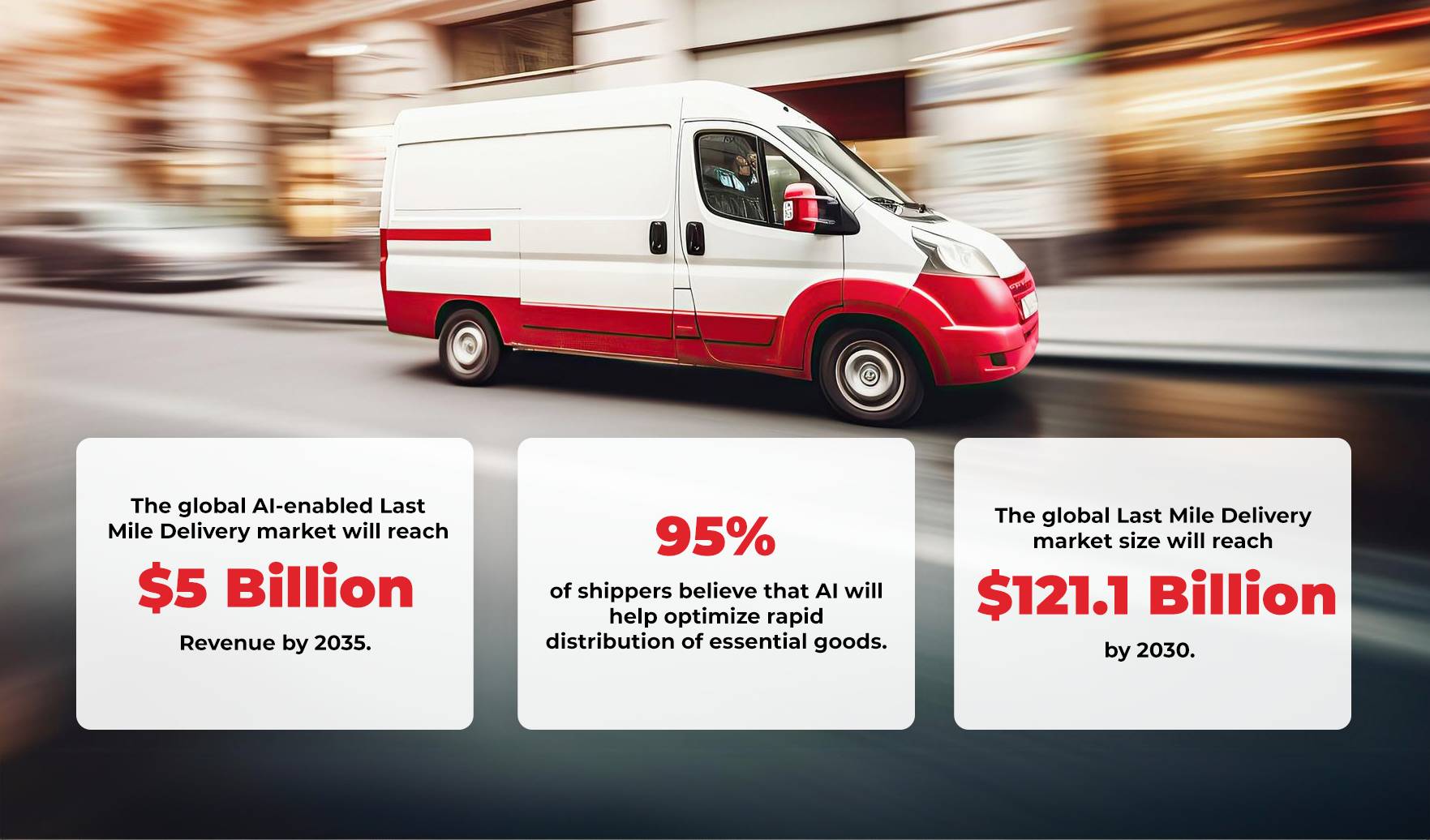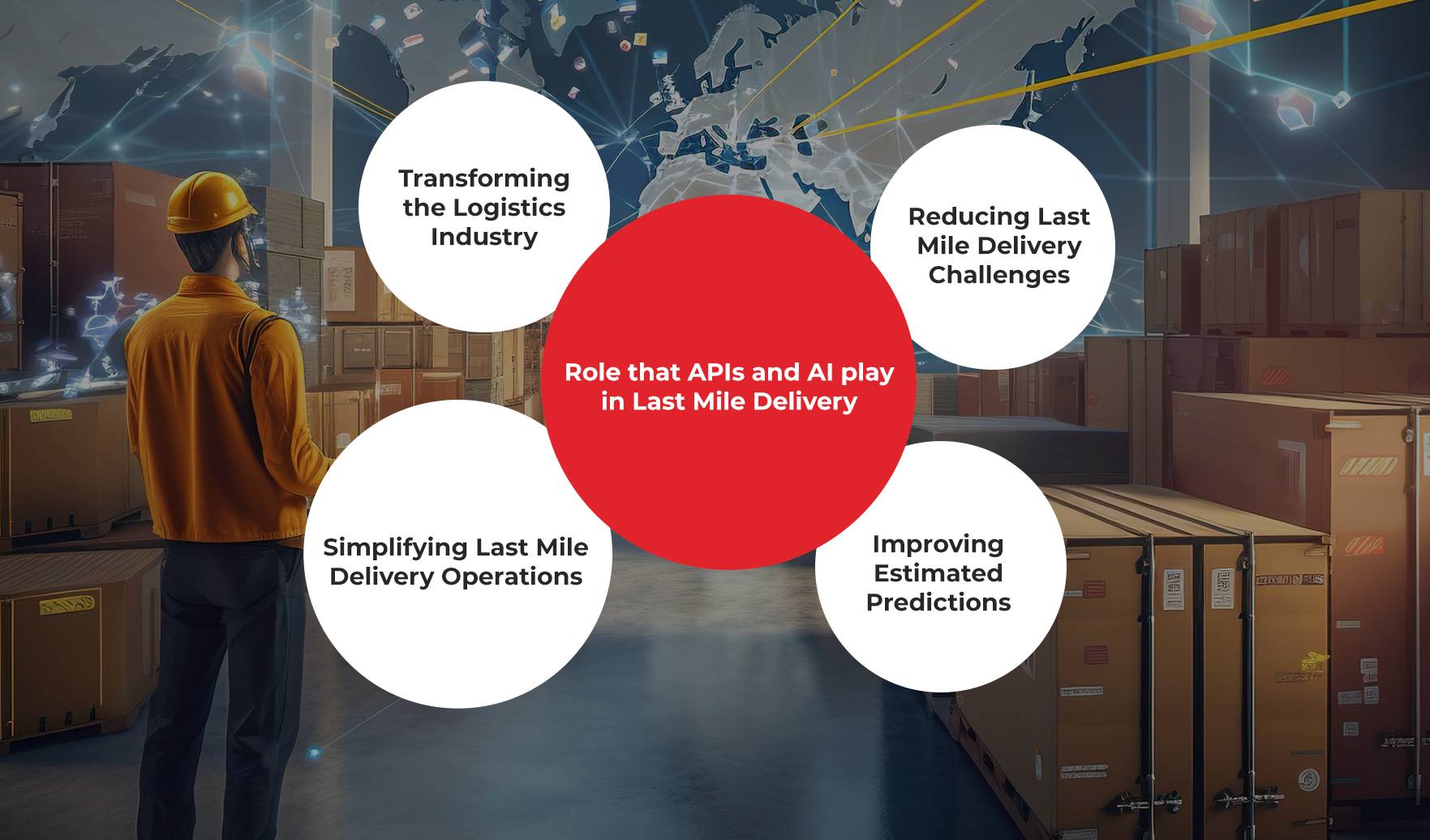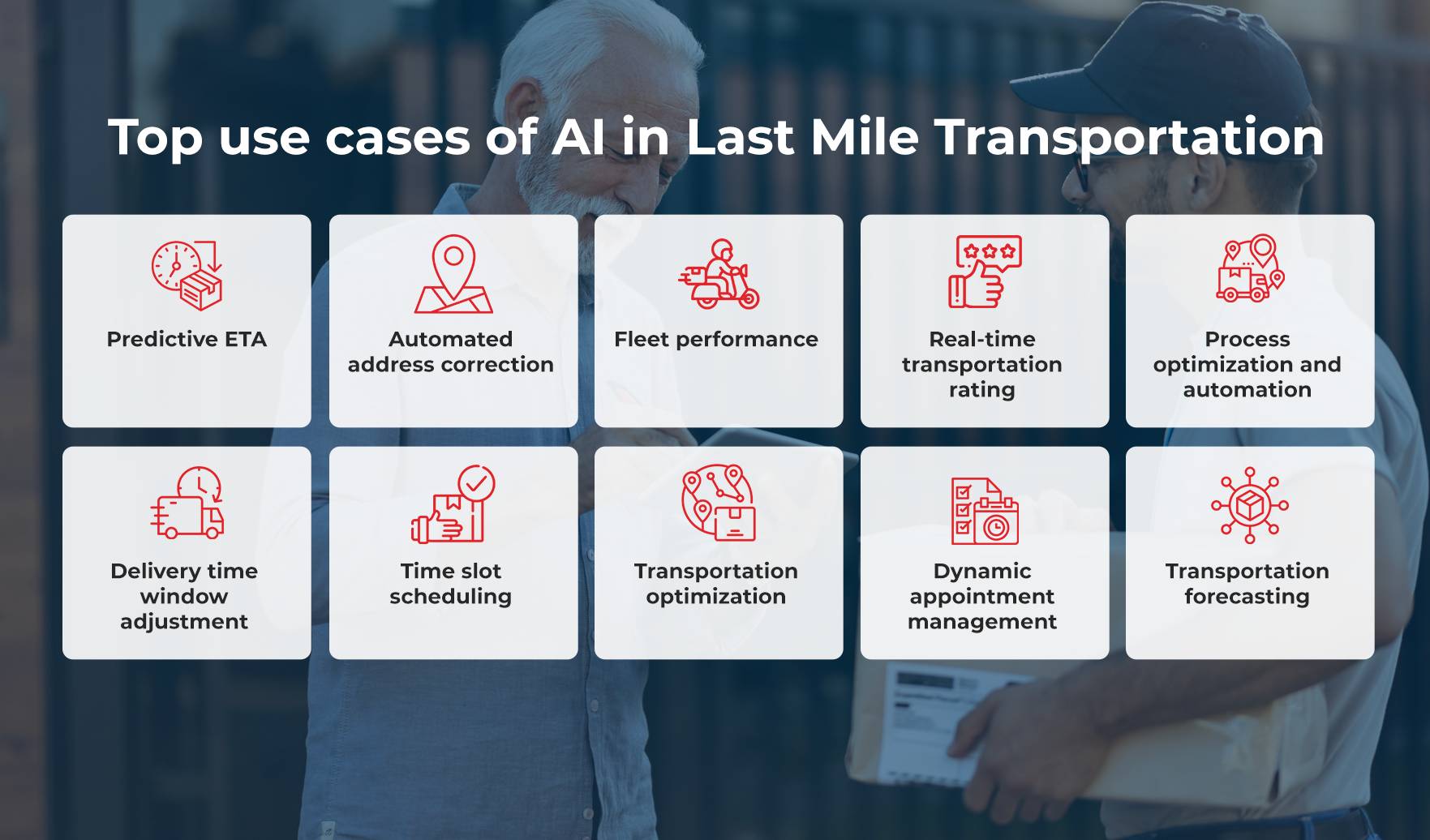
4 Ways APIs And AI Boost Your Last Mile Delivery With Advance Last Mile Delivery Software
To meet the demands of today’s fast-paced business landscape, efficient last mile delivery software has become the key. It helps meet customer expectations and gain a competitive edge over competitors. Adding Application Programming Interfaces (APIs) and Artificial Intelligence (AI) to last mile delivery management software has led to transformative advancements. These additions have helped businesses navigate the complexities of last mile deliveries seamlessly.
– The global AI-enabled last mile delivery market will be worth $5 billion in revenue by 2035. Growing at a CAGR of 20% between 2023-2035.
– 95% of shippers believe that AI will help optimize the rapid distribution of essential goods.
– The global last mile delivery market size stood at $27.1 billion in 2022. Growing at a CAGR of 20.6% between 2022-2030, reaching a value of $121.1 billion by 2030.

Today, let’s delve into the pivotal role that APIs and AI play in addressing concerns related to last mile delivery.

Simplifying Last Mile Delivery Operations:
The use of APIs and AI has become instrumental in simplifying last mile operations. By integrating APIs into their system, businesses can now connect different software solutions. These include the likes of order management, route optimization, and last mile delivery tracking. With the results obtained, dispatches obtained complete visibility of the order and access to real-time monitoring of drivers. The use of AI-driven algorithms helps optimize routes, ensuring timely deliveries which reduces fuel consumption and operational costs.
Reducing Last Mile Delivery Challenges:
The last mile is the shortest leg in the entire operation; however, there are multiple challenges that need to be addressed. Starting with the operational cost ( which is 53% of total logistics costs). Traffic congestions, customer-preferred delivery time window, increasing demand for same-hour and same-day deliveries add further complications. To satisfy customers, addressing failed delivery attempts and handling order returns further complicates deliveries in the last mile. The use of APIs and AI by the best last mile delivery routing software can help predict potential delays, offer alternative routes, and even adjust delivery windows dynamically.
Transforming the Logistics Industry:
AI has been transforming the entire industry and the logistics industry is not to be left behind. The last mile delivery software has especially been impacted with AI playing a crucial role in its transformation. The use of AI-powered data analytics has helped businesses anticipate customer demand patterns, optimize inventory management, and reduce the risk of stockouts. By adding Machine Learning to the mix, there has been enhancement in route optimization. Considering real-time traffic updates and historical data, ensuring that drivers follow the most efficient routes. AI-driven chatbots and virtual assistants have now improved customer interactions, offering accurate delivery information and updates.
Improving Estimated Predictions:
One of the crucial aspects of software for delivery in the last mile is setting accurate delivery estimates for its customers. The best last mile delivery management software, supported by AI, can provide remarkably accurate estimates by factoring in multiple variables. These variables include traffic conditions, historical delivery data, weather forecasts, and even driver behavior. By continuously analyzing and learning from new data, the software improves its predictions over time, increasing customer happiness through accurate delivery estimates. Nowadays, customers even get notified via pre-order ETAs for their order delivery. This gives the customer multiple options to choose from and can place their order accordingly that meets their schedule.
Benefits of AI in Logistics and Supply Chain Operations
The use of AI has been immensely beneficial to improve performance for logistics and supply chain operations. While digitization helps accumulate historical data, AI helps identify patterns and trends. This helps businesses to optimize their overall supply chain operations. There have been numerous demand forecasting tools powered by AI to help businesses predict demand fluctuations, helping with inventory adjustments to prevent overstocking or stockouts. The use of AI for inventory management for last mile deliveries has improved inventory turnover rates and reduced carrying costs.

As per Gartner, these are top use cases of AI in last mile transportation-
– Predictive ETA
– Automated address correction
– Fleet performance
– Real-time transportation rating
– Process optimization and automation
– Delivery time window adjustment
– Time slot scheduling
– Transportation optimization
– Dynamic appointment management
– Transportation forecasting
Conclusion:
By merging APIs and AI, the delivery landscape in the last mile has been reshaped. Through seamless connectivity and data exchange enabled by APIs, businesses can optimize their operations and provide real-time updates to all stakeholders. AI-driven algorithms enhance route optimization, inventory management, and customer interactions, driving efficiency and customer satisfaction. As AI advances, its predictive powers will become even more polished, making its position as a game-changer in the logistics business. Embracing the best last mile delivery software with APIs and AI is no longer just an option, but a strategic necessity for businesses to meet targets.
Thanks to the dynamic merging of APIs and AI, the future of last mile delivery software is here and it’s intelligent, effective, and customer-centric. Furthermore, the predictive power of AI has enormous potential to transform the logistics supply chain, altering how businesses manage their inventory, streamline operations, and provide unmatched customer service. To know more on how LogiNext is helping businesses overcome challenges for last mile delivery logistics, click the red button below.
119







@LogiNext